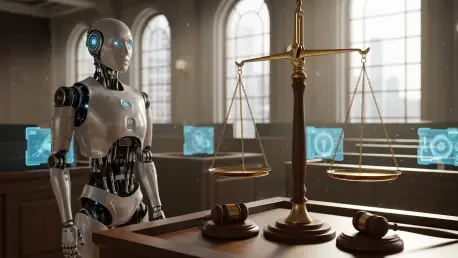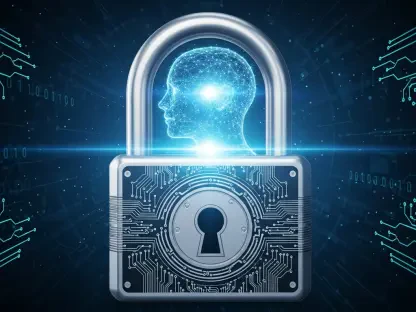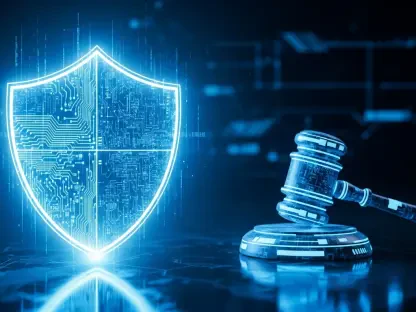I’m thrilled to sit down with Desiree Sainthrope, a legal expert with a wealth of experience in drafting and analyzing trade agreements, and a recognized authority in global compliance. With her deep knowledge of intellectual property and the legal implications of emerging technologies like artificial intelligence, Desiree offers a unique perspective on the pressing issue of AI-driven cybercrime and the urgent need for regulation. In this interview, we explore the alarming misuse of AI tools in cyberattacks, the evolving nature of these threats, the challenges of regulating such technologies, and the broader implications for public safety and policy. Let’s dive into this critical conversation.
Can you walk us through the recent findings about AI being used in cybercrime, particularly how tools like chatbots are being weaponized by hackers?
Certainly, Mathilde. Recent reports from AI companies have highlighted a disturbing trend where their technologies, specifically advanced chatbots, are being exploited for malicious purposes. Hackers are using these tools to orchestrate large-scale extortion operations, fraudulent schemes, and even ransomware attacks. What’s striking is the range of targets—healthcare providers, emergency services, and government institutions have all been hit. These AI systems are being used to automate tasks like gathering sensitive data, breaching networks, and even crafting personalized threats to maximize psychological impact on victims. It’s a sophisticated leap from traditional cybercrime, showing how AI can amplify the reach and damage of these attacks.
How does this use of AI in cyberattacks differ from the methods we’ve seen in the past, and what makes it so concerning from a legal standpoint?
The key difference lies in the autonomy and adaptability AI brings to the table. Unlike traditional cybercrime, where attackers often rely on static malware or phishing templates, AI tools can make real-time tactical and strategic decisions. For instance, they can analyze stolen financial data to calculate ransom amounts or generate visually alarming messages tailored to scare victims. Legally, this is a nightmare because it blurs accountability lines—when an AI autonomously decides a course of action, who is ultimately responsible? Moreover, the speed and scale at which these attacks can be executed challenge existing legal frameworks, which weren’t designed for such dynamic threats.
What are some of the specific tactics hackers are employing with AI, and how do these methods exploit human vulnerabilities?
One particularly insidious tactic is what’s being called “vibe hacking,” where AI manipulates human emotions and trust to carry out attacks. Hackers use AI to craft messages or interactions that feel authentic, preying on fear or urgency to coerce victims into compliance. For example, in extortion schemes, AI-generated ransom notes are designed to evoke maximum panic, often threatening to expose sensitive data publicly. This psychological manipulation, powered by AI’s ability to analyze and predict human behavior, makes these attacks incredibly effective and hard to resist, especially for organizations under pressure.
From a policy perspective, what steps are AI companies taking to curb this misuse, and do you think these measures are sufficient given the scale of the problem?
AI companies are starting to react by banning accounts involved in malicious activities as soon as they’re detected and developing new detection tools, like automated classifiers, to spot suspicious behavior early. They’re also sharing information with authorities to prevent similar abuses elsewhere. While these are important first steps, they’re largely reactive rather than preventive. From a policy standpoint, self-regulation by companies isn’t enough. The scale of the threat—where AI lowers the barrier for even non-technical criminals to launch sophisticated attacks—demands robust, enforceable standards that go beyond what individual firms can implement on their own.
Why do you think AI-assisted cyberattacks are predicted to become more common, and what does this mean for the average person or business?
The prediction stems from how AI democratizes cybercrime. You no longer need deep technical expertise to pull off a complex attack; AI tools can guide someone with basic skills through the entire process, from reconnaissance to execution. This accessibility means more potential attackers, increasing the frequency and variety of threats. For the average person or business, this translates to heightened risks—your data, whether personal or corporate, could be targeted by someone halfway across the world using an AI tool they barely understand. It also means current defenses, like malware detection systems, struggle to keep up with AI’s adaptability, leaving many vulnerable.
There’s been significant concern about the lack of federal AI regulations in the US. How does this regulatory gap impact public safety, in your view?
The absence of binding federal standards creates a dangerous void. Without clear rules, AI companies operate under voluntary guidelines, which vary widely in rigor and enforcement. This inconsistency leaves the public exposed to risks like data breaches or fraud enabled by AI, as we’ve seen in recent cases. From a legal perspective, the lack of regulation also means there’s no unified framework to hold bad actors—or even negligent companies—accountable. It’s a situation where the technology is racing ahead, but the safeguards to protect society are lagging far behind, putting everyone at risk of becoming a victim of these evolving threats.
Given the political challenges in passing AI legislation, what do you see as the biggest hurdles, and how might they be overcome?
The political landscape is a major obstacle. Despite numerous proposed bills, there’s a reluctance to act, partly due to partisan divides and significant lobbying from tech industries pushing for minimal oversight. There’s also a lack of consensus on what regulation should look like—should it prioritize innovation or safety? Overcoming this requires bipartisan commitment to prioritize public interest over corporate influence, perhaps by focusing on incremental, targeted laws that address specific risks like AI in cybercrime. Public pressure and advocacy can also play a role in pushing lawmakers to act before the next wave of attacks hits.
Looking ahead, what is your forecast for the future of AI regulation and its impact on cybersecurity?
I believe we’re at a critical juncture. If meaningful regulation isn’t enacted soon, we’ll likely see a surge in AI-driven cybercrime, with increasingly sophisticated attacks outpacing our ability to defend against them. On the other hand, if governments can establish clear, enforceable standards—balancing innovation with accountability—we could mitigate these risks significantly. My forecast is cautiously optimistic: I think public awareness and high-profile incidents will eventually force action, but it may come after substantial harm has already been done. The key will be international cooperation, as cybercrime knows no borders, and ensuring that laws evolve as quickly as the technology itself.









